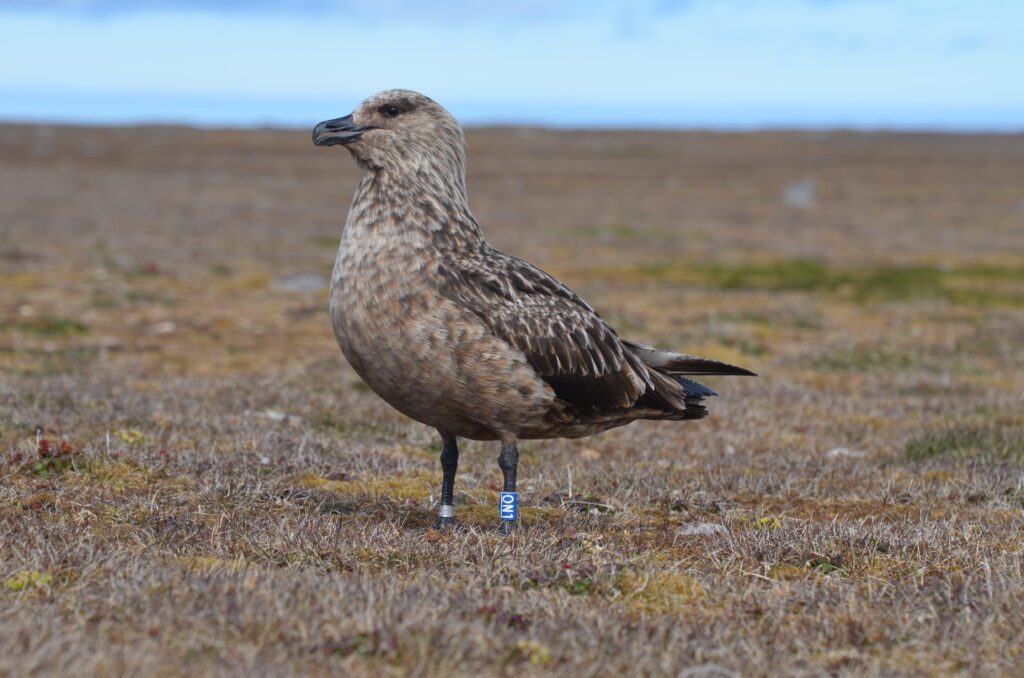Environmental toxins in wintering areas may affect reproduction
By combining tracking data from light sensor geolocators with mercury contamination found in feathers from breeding great skuas (Stercorarius skua) at Bjørnøya, researchers have investigated the relationship between reproductive success and mercury exposure in the wintering areas. The results are worrying and may also be bad news for several other seabird species.
Uneven distribution of mercury
Knowledge of the ecology and at-sea distribution of migratory species like seabirds has substantially increased over the last two decades. Furthermore, an increasing number of studies have recently focused on chemical contamination of birds over their annual cycle. However, the understanding of the combined effects of spatial movements and contamination on the life-history traits of seabirds is still scarce. During winter, seabirds can use very different areas at the large scale. Such overwintering strategies and distribution may expose individuals to contrasting environmental stressors, including pollutants. An international team of researchers have studied the winter distribution and contamination with mercury, and their combined effects on reproduction, in a great skua population breeding on Bjørnøya, Svalbard.
Mercury affects egg volume
The tracking data confirmed that individuals of this specific great skua population overwinter in three areas of the North Atlantic, namely off the northwest coast of Africa, off the west coast of Europe and in the northwest Atlantic. Analysis of feathers from the birds revealed some of the highest concentrations of mercury ever measured in birds from the Arctic and North Atlantic. The highest mercury concentrations were found in great skuas wintering off Europe, followed by birds wintering in the northwest Atlantic and off the coast of Northwest Africa. Female winter distribution and accumulated mercury affected the volume of their eggs, but differently between the wintering areas. For great skuas wintering off Africa and in the northwest Atlantic, egg volume declined with increasing mercury concentration in the body, while the opposite was found for birds wintering off Europe.
Relevance for other species
This study provides new insights to the contamination risks that seabirds might face according to their overwintering distribution and the possible associated carry-over effects of contaminants. Great skuas share wintering areas with many other Arctic seabird species, and the results seen here might therefore also be relevant for them.
Les hele artikkelen:

Photo © Vegard Bang Fjeldheim

Photo © Erlend Lorentzen
Contact person: Hallvard Strøm, Norwegian Polar Institute